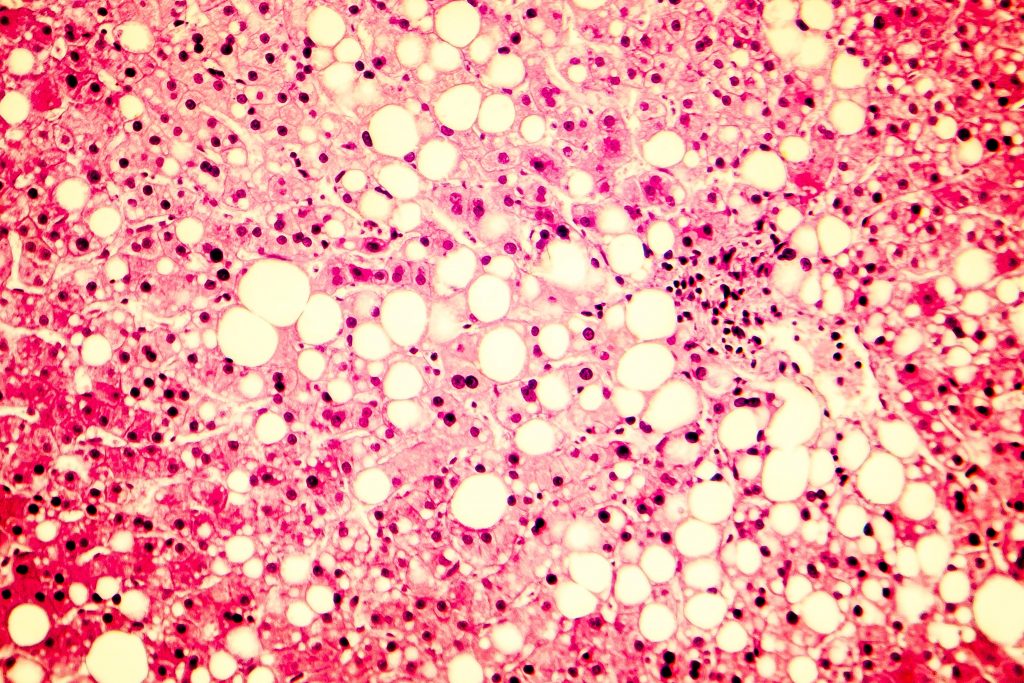- PFAS are known as "forever chemicals" because they are slow to break down in the environment and the body.
- Exposure to PFAS has been linked to an elevated risk of some cancers, low birth weight, and immune dysfunction.
- Now, scientists say that some of the most well-known PFAS may cause liver damage.
More patients are requiring liver transplants late in life, and scientists have identified exposure to industrial chemical compounds as a contributing factor to increased rates of liver disease.
In the next decade, scientists expect to see non-alcoholic fatty liver disease become the leading reason for liver transplants. The disease, which is estimated to affect 25% of the world's population, has already caused millions of elderly Americans to require new livers.
Several factors can affect an individual's risk of liver disease. Drinking alcohol can damage the liver over time, especially for heavy drinkers. Obesity, high blood pressure, and high cholesterol have also been named as risk factors.
Now, scientists have found that exposure to chemicals called PFAS, which are especially slow to break down in the body, is linked to an increased risk of non-alcoholic fatty liver disease, according to an analysis published in Environmental Health Perspectives.
PFAS chemicals are circulating in the environment
PFAS, or per- and polyfluoroalkyl substances, are notoriously difficult to get rid of once they've been manufactured. They're known for their waterproof, stain-resistant, and grease-resistant properties, making PFAS popular additives in everything from rain gear to take-out containers.
Scientists have found that virtually all Americans are exposed to some PFAS in the air or contaminated drinking water, and the chemicals remain in the bloodstream for a lifetime. High levels of exposure to PFAS have been linked to health risks related to some cancers, weakened immune function, and developmental delays in children.
Scientists who study environmental health have suspected a connection between PFAS and liver damage for years now, but the field needed a large-scale review to prove a link, lead author Elizabeth Costello said in a news release.
Costello and colleagues at the University of Southern California's Keck School of Medicine compiled more than 100 studies that evaluated PFAS exposure and liver damage in either human or rodent populations.
The evidence clearly demonstrated that exposure to three well-known PFAS was connected to higher levels of an enzyme that indicates liver damage, Costello said. Those specific chemicals — nicknamed PFOS, PFOA, and PFNA — are among the most studied PFAS to date.
Evidence for newer PFAS created to replace banned or blacklisted chemicals is not as strong, though the authors predicted that these next-generation chemicals behave like the most well-known PFAS because they share a similar structure.
Exposure to PFAS may affect the liver similarly to a high-fat diet
The authors also noted that PFAS are structurally similar to fatty acids, so exposure to the chemicals may mimic the effects of consuming a lot of fat.
Studies in rodents exposed to PFAS revealed that the chemicals bind to receptors for fatty acids, causing abnormal fat buildup in the liver. This effect was linked to several indicators of fatty liver disease, including increased cholesterol, triglycerides, and uric acid.
However, isolating the effect of PFAS on the liver in humans is a trickier feat. Humans are exposed to a chemical cocktail of hundreds if not thousands of different compounds that may or may not affect human health, Costello said in the news release. Future research may use mixture analyses to evaluate different combinations of chemicals, and more studies are needed to follow people exposed to PFAS over several years.

